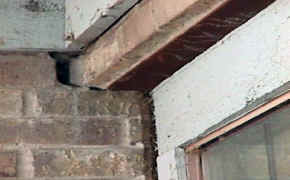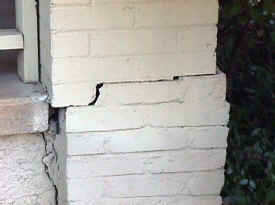
Slab foundations are the most common type of underpinning for recently built homes in North Texas. Typically these structures are well-engineered and built with concrete footings and/or underground piers and concrete floors. Most of the newer Dallas, McKinney, Plano and Frisco home and condo inspections we perform involve slabs.
Inspecting Home Foundations – Pier and Beam
Another popular substructural alternative is Pier and Beam. These foundations consist of either wood or concrete piers that support beams above the ground. These beams support the floor joists and the floor joists supports the floor. A pier and beam foundation has a crawlspace under the home. It’s a good idea to have a professional foundation inspection from time to time for plumbing leaks, flooding, rodent activity, and other potential problems.
Moisture and Foundations
Water should not stand next to the footing or foundational structure for an extended period of time. The moisture in the soils will cause the slab or pier wall to heave in that area. The source of the water can be rain, or any number of possible plumbing leaks around the home. Repairing leaks is a must. Soil next to foundations should be pitched in a way that will drain rainwater away from the home. It may be necessary to build the soils up next to the home with sandy loam or topsoil. Just remember, dirt should not extend higher than 2 inches below the bottom course of brick for a slab or half way up the perimeter footing of a pier-and-beam structure.
Texas Foundations and Soil Conditions
 If clay soils next to the foundation becomes too dry, they will shrink, crack, and pull away from the perimeter of the foundation. The subsoil then loses its ability to support the foundation. Sooner or later the foundation will crack and settle into this void. These soil cracks can also admit water during heavy rains. The water will then wash the soil out from under the foundation. This will only make things worse. When the soil starts to separate from the foundation by up to an 1/8 of an inch, the soil needs water. Watering of the soil near the home’s foundations should be uniform in order to minimize the possibility of exerting uneven pressure on the structure. A sprinkler system, if installed and utilized properly, can provide the best protection.
If clay soils next to the foundation becomes too dry, they will shrink, crack, and pull away from the perimeter of the foundation. The subsoil then loses its ability to support the foundation. Sooner or later the foundation will crack and settle into this void. These soil cracks can also admit water during heavy rains. The water will then wash the soil out from under the foundation. This will only make things worse. When the soil starts to separate from the foundation by up to an 1/8 of an inch, the soil needs water. Watering of the soil near the home’s foundations should be uniform in order to minimize the possibility of exerting uneven pressure on the structure. A sprinkler system, if installed and utilized properly, can provide the best protection.
Maintaining a Good Foundation
The next best option is to place soaker hoses 12-18 inches away from the house. Water at least a few days a week, 10-15 minutes at a time, during the dry seasons of the year. A (Y) at the faucet and an in-line timer will reduce the efforts of watering. One last note, do not plant trees within 10 feet of home. Surface rooting trees, such as Willows, Mulberries and Maples, should be planted even farther away from the home.